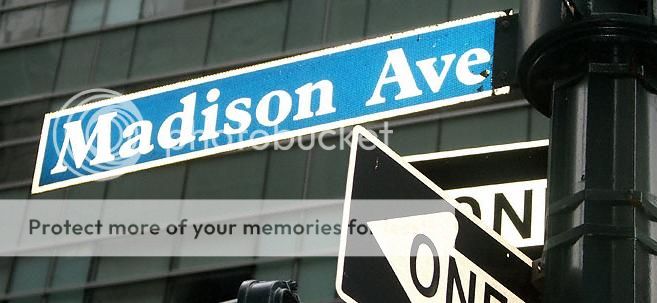
Much of today’s messaging about the environment, green initiatives and ways for the public to make a difference physically and fiscally are centered around media and advertising. To wit—even amid the deepening recession, one market has seemed to defy the economic downturn: green and environmentally-friendly product launches. Sadly, however, a large and growing subset of the eco-conscious creative collective is enveloped in hyperbole and hubris, a term the industry has labeled “greenwashing” that we will discuss in much greater detail in another article. It was natural then, that as part of our Earth Week coverage, ScriptPhD.com undertook green advertising as part of our continuing “Selling Science Smartly” series. Here, we profile a case study of several impressive (and effective) campaigns by the West Coast-based RIESTER, including
work on recycling, clean air, and the first fully-integrated municipal sustainability campaign in the US. We also had an opportunity to speak with RIESTER’s executive team, who provided insights into their creative strategy, why green advertising is more challenging than ever before, the crucial importance that interactive played in their success, and why every agency should be blogging more.
Campaigns: CalRecycle’s “Bottles and Cans” and STAND FOR LESS campaigns; Maricopa County’s Clean Air Make More Campaign (print, television, interactive)
Agency: RIESTER (Los Angeles, Phoenix, Salt Lake City)
Industry: Environment, Sustainability
If it seems like RIESTER is ideally suited to forge new ground in environmental advertising, they are. As a self-described ensemble of “brand activists,” RIESTER has taken on important social, health, technology and sustainability causes that transcend any individual campaigns or creative material. They’ve woven impact into the fabric of their 20-year identity to become one of the largest independent advertising and public relations firms in the United States. Their “Great Salt River” cleanup campaign resulted in one of the greatest single-day volunteer turn-ups in American history. A mid-90s shocking anti-tobacco campaign was so successful in curbing teen tobacco consumption, that it garnered the attention of major national media outlets. Likewise, their campaign with Gold’s Gym partnered with the American Diabetes Association, and gym members, to fight America’s growing obesity problem. Having written extensively about the environment on their blog, RIESTER has shown dedication and commitment to impacting real change with meaningful, long-term work. Here are several of their recent efforts.
A clever, funny spot devoted to clean air awareness in Maricopa County, Arizona (notoriously fraught with pollution and smog problems):
In 2009, San Diego became the first city in America to initiate a fully-integrated sustainability marketing campaign to encourage citizens to use less energy, water and vehicle mileage and to recycle more. Here are a series of television spots for the San Diego STAND FOR LESS Campaign:
And finally, an exceptionally smart, unusual ad for the California Department of Conservation touting the value of recycling from a most different perspective:
Why we like it:
Plain and simple, these campaigns are different. RIESTER has managed to tap into a creative channel that reaches its audience in a new, clever, sly way. When was the last time you saw a commercial or billboard about recycling that anthropomorphized the object being recycled? The answer is probably never. More than likely, the spot you saw showcased sad pictures of yet another ravaged, pillaged section of our fraying Earth, or graphics touting the benefits your behavior has to our environment. This spot takes those arguments, and flips them 180 degrees. It’s cute, it’s funny, and that bottle has some kind of attitude! The result? Since the campaign’s launch, California increased their recycling rates by 16%. Likewise for the Maricopa County clean air spot. Arizonans are constantly bombarded with appeals and rations stave off pollution problems. This commercial is flat-out ridiculous… and ingenious. Even in Beijing, one of the most consistently over-polluted cities in the world, people don’t walk around holding their breath from one location to the next. But the spot is positing an over-exaggerated situation to have people imagine a time when we would have to do such an unthinkable thing, and in turn, to drive them towards actions that would prevent it.
Why it’s good green advertising:
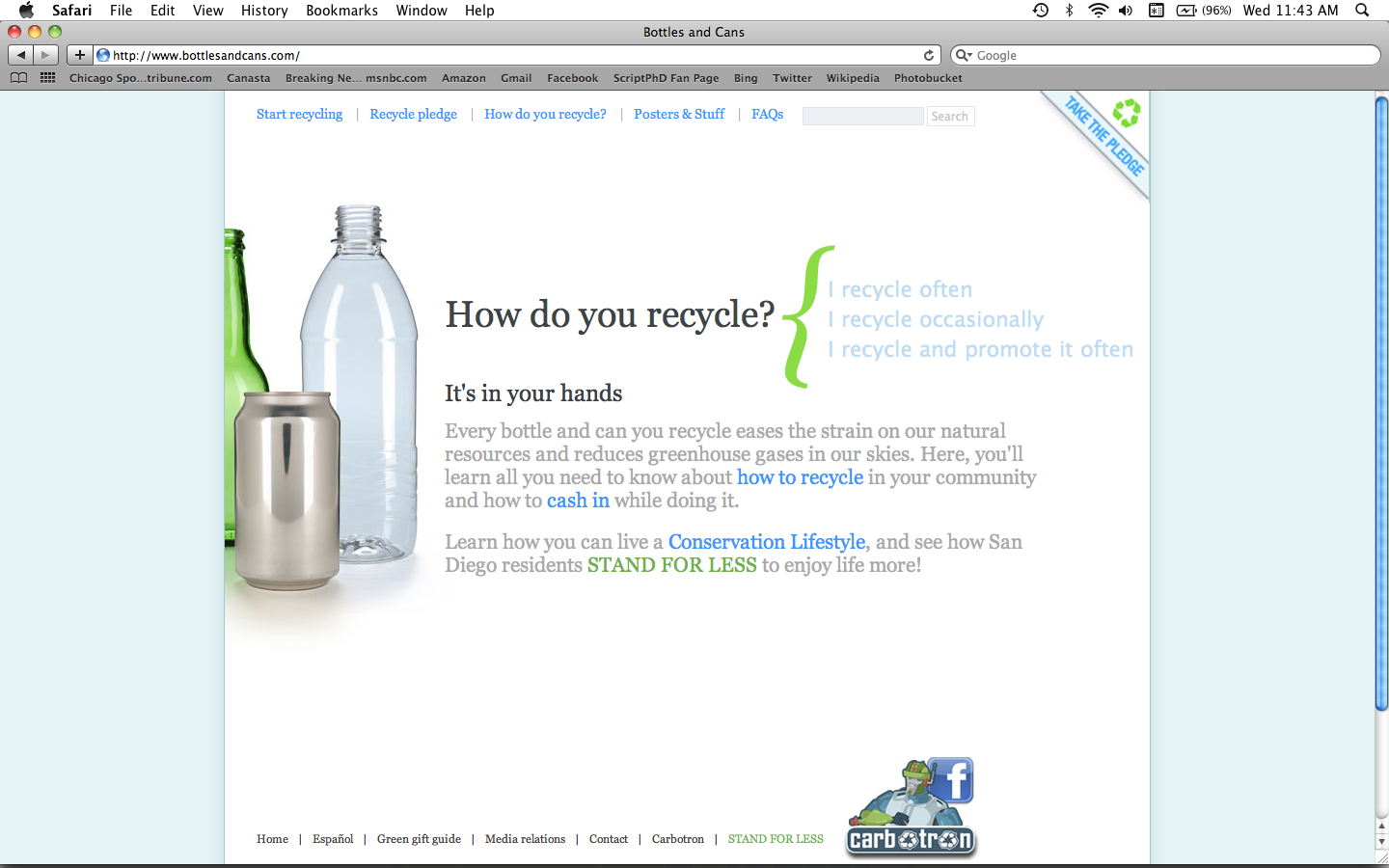
Nobody likes being told what to do. Any parent of a 2-year-old toddler can attest to this. And no one likes being guilted into doing something. Neither is a strong motivation for long-term behavioral change. Where RIESTER veers smartly from this staid formula is in fully engaging with their audience on a nonjudgemental level. Crushing and recycling a can, something that can hardly be compared to the equivalent of, say, buying a Prius, becomes significant to them. Take a look at the CalRecycle website pictured on the left. It asks rather than tells, and it includes all participants of recycling, even those who never recycle. That’s significant. Too many environmental initiatives fall into the trap of preaching to the choir, never reaching a new target audience that hasn’t been exposed to the message. Here, an interactive campaign groups you togehter, whether you’re a granola-eating, hemp-clad, lean mean green machine, or you have never even thought about recycling before. Engaging the entire community together, and providing them with the necessary know-how for sustainable behavior, is the only functional long-term solution.
Why it works:
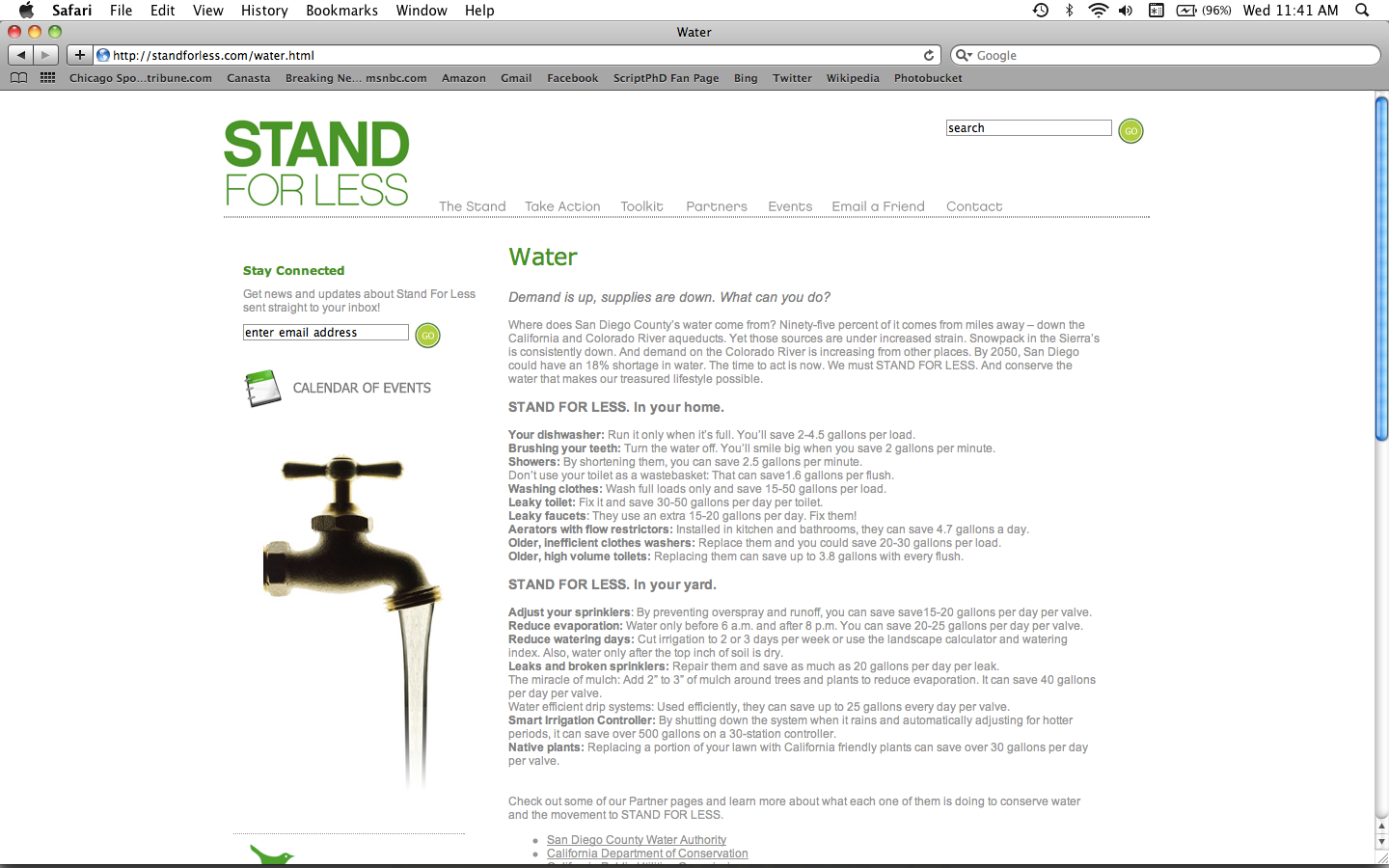
RIESTER’s green campaigns, especially STAND FOR LESS, are truly interactive, and go a long way towards continuing long-term conversations about community sustainability. The advertising spots are really just the start of the conversation. For this, the STAND FOR LESS campaign was the rightful recipient of a 2010 Addy Award for an integrated campaign. The STAND FOR LESS site features a blog with a constant news stream, a calendar of events to get involved, a toolkit for individual activists who want to get involved, and informative content on ways to incorporate eco-conscious behavior into one’s own household. They take advantage of social media in a meaningful way, with both Facebook and Twiter feeds for people to exchange ideas. Research has clearly shown that simply providing people with information, especially in single doses, has little effect on individuals and businesses. Instead, a community-based model of social marketing has emerged to encourage sustainability practices. STAND FOR LESS is an important start in what will eventually be a common model of urban initiative.
What other green science campaigns can learn from this one…
In selling green science smartly, don’t recycle ideas, pardon the pun. Be edgy, different, and think outside the box. A recent Gallup poll (released April 09, 2010), revealed that green behavior in the United States, although common, is not changing. Standard eco-friendly practices such as recycling, low-wattage light bulb replacement and purchasing decisions, have either increased marginally or not at all since 2000, when green advertising began bombarding the airwaves. Furthermore, there is an enormous collective guilt over the ideal we know we should be achieving, yet consistently fall short of. Advertising that feels sanctimonious will only reverberate this effect, rather than motivating people into significant change. When many people either don’t know where to start or feel overburdened by incorporating yet another lifestyle change into an already overscheduled and busy day, it’s important (as the STAND FOR LESS campaign does) to remind them that small, inexpensive actions incur an additive effect and do make a difference. The use of humor, irony and droll, tongue-in-cheek moments, like imagining how good recycling must feel for the bottle, are far more effective in sparking and retaining dynamic conversation than either direct information or ham-handed appeals. Getting people’s attention like this is especially critical in the face of an onslaught of green noise in labeling and product availability, many of which are under no obligation to prove their claims. Indeed, the New York times noted that as of 2008, the advertising industry was significantly pulling back on eco-friendly marketing due to growing public skepticism of ads with environmental messages. The take home lesson is that agencies will simply have to work harder and smarter than back in the days when we were all a little green about being green.
ScriptPhD.com caught up with RIESTER Executive Creative Director Tom Ortega and Editorial Director Jim Breitinger to talk about their conservation work, the thought process fueling their smart “green” creative, why interactive is imperative, and what makes for good environment advertising in our cluttered, hyper-messaged media.
ScriptPhD: RIESTER proudly proclaims themselves as a collective of “brand activists.” Can you shed a bit more light on your definition of “brand activist” and how that influences your creative philosophy when it comes to science, technology and particularly sustainability advertising?
Tom Ortega: RIESTER has a long history of working with clients who have a purpose beyond commercialism, which is the statement that you see on our website. What that means is that our clients do much more than serve an immediate need for a consumer. So while we do a lot of work for [non-sustainable] products, we’ve found other connection points as well with the consumer so that the consumer can develop a longer-lasting relationship with those brands. The idea of becoming activists has two sides to it as well, because we feel that when consumers become true believers in a brand, they themselves become activists for those brands. And their voice is certainly greater than any voice that can be heard. We all know the power of the word of mouth, right? That’s what we’re able to create, whether it is for a pure sustainability campaign, or a packaged good product that really connects with the consumer.
Jim Breitinger: The term is also an organic outgrowth of, really, who we are, the kind of business we go after, and the clients we have. We become incredibly passionate about who they are and what their cause or product is. We’re the activists who go the extra mile for the client.
SPhD: So much of impacting pro-environment and sustainability efforts involves changing behavior and wielding persuasion. Ironically enough, this is exactly what advertising is in the business of doing. In your minds, have agencies been underutilizing the power of social marketing and what are some of the areas you’d like to see it expanded, both in content and risk-taking.
TO: Agencies, over the past five years, have become very smart about human behavior, and recognizing how brands connect with that behavior. What you’ve seen over the past years has been a growth of research and planning involved in advertising campaigns. So I don’t know if it’s been underutilized. What makes RIESTER different is that we have an in-house planning department that has researchers who are working here every day who understand social change, human behavior, why people do things—whether it has to do with recycling or buying a specific product. For us, behavior change is something that we take very seriously, it leads most of our campaigns when it comes to research and developing a foundation for the campaign.
Part of what’s tricky about advertising in the “green” arena is the word “green,” which has certainly lost its meaning. This is due to the greenwashing that has occurred throughout the past number of years. It reminds me a lot of the nutritional advertising that was done years ago with all of the blanketed “fat free” nutritional messages that were put out there. I think environmental marketing runs the risk of neutralizing itself with messages that really aren’t relevant or really don’t have meaning them. It’s important to understand that consumers are smart, consumers are worn out and getting message fatigue, and we have to make sure that this message has meaning behind it. When we’re telling people a certain product or behavior has sustainable practices, it darned well better fit that bill.
SPhD: As is the case for many science and technology ads, there is a tendency for environment, social awareness and sustainability messages to be anodyne or milquetoast. One of the things I love about your California recycling campaigns (video and print) as well as the Maricopa County Clean Air campaign is the use of humor and irony. Very clever stuff! Take us through some of the creative strategy for these spots and how you hoped to get the messages across.
TO: Well, human beings want to be entertained. We owe it to them, if we’re going to take up thirty seconds of their time, to entertain them to a certain degree. Because if we don’t, they’re not going to pay attention to the message. So it’s important for us to create a message they’ll want to watch. Humor is a great way to do that. It’s also a wonderful way of breaking down barriers that might already be there. The idea of air pollution is sort of a hackneyed idea. We’ve been hearing it over and over again for years, and you have to get people to pay attention to that message, to demonstrate that it is relevant to their lives.
For the California recycling campaign, “Good For the Bottle, Good For the Can,” it was funny because in California, people really understand, they get it. It’s the original environmental state. But in order to get deeper with it, we had to commit it a lot differently, and not just state that it’s good for the planet. That message has already reached the target that cares about that. We had to reach a different target, and talk about the fact that it was good for these cans and bottles, and sort of personify these as beings that would go on to live another life. You have to get people to look at things differently—that’s part of behavior change.

SPhD: Let’s spend some time talking about the impressive STAND FOR LESS campaign. When you have a city approach you about a wide-scale campaign like this, what are some of the first things that go into laying down a foundation, or groundwork for the overall message?
TO: The most important part of that campaign was to organize the coalition of members, the people and partners to this, and that was really spearheaded by Mirja Reister, our executive planner. She worked tirelessly to bring together partners from the private and public sectors to get them in the same room and working together. In order for it to be a successful, integrated, city-wide campaign, we had to have all these people participating and taking an interest in this.
On the communications side, we worked on creating the STAND FOR LESS blog and the social network link that we have created. It’s an amazing site to look at in terms of both the outreach that has occurred and the momentum that the campaign has managed to develop.
SPhD: Who are some of the people you worked and consulted with as you developed the TV and radio spots? I know Jim mentioned you worked with Ed Begley, Jr.
TO: Ed was there at the launch of the campaign because he has such a key interest in this. [For] the television campaign that you saw, the original thought on that boiled down to: the message is “STAND FOR LESS,” so the advertising itself has to “STAND FOR LESS.” We wanted 15 second commercials, not 30 second ones. We wanted a stripped-down set, not an elaborate set. We wanted the spots to be cost-efficient in terms of the money that was used to make them, because we wanted to demonstrate that we could make commercials for less. Everything that went into that, even the production itself, was a fully sustainable production. There had to be recycling on the set. We paid attention to the location where we shot it, because we didn’t want people to drive far. Everything was thought out. We wanted to make sure that we weren’t just saying it, but that we were doing it.
SPhD: What kinds of effects has the campaign incurred in San Diego? Any lessons from it for future work (good or bad)?
JB: It gets back to the whole kernel or the idea behind the campaign, of bring together people who were already working on these issues. When I’ve been in San Diego (and I moved there to work on this campaign), I was really focused on finding people on the ground who were really making a difference. Finding those truly authentic characters who were standing for less in San Diego. And I think it’s made a big difference in the community in that sense, that it has brought those people together, the Surfrider Foundation, The Center For Sustainable Energy, San Diego Gas and Electric, the different government entities we’ve worked with. These are people who are all doing great things but not necessarily communicating on a daily basis. In that sense, I think that’s been the greatest effect on this campaign, is uniting people who have that common cause, who really care about sustainability.
As for behavioral change in the population, there’s been progress and I’ve posted a few things on the blog to that effect. [The mayor of San Diego and the US Navy are both Standing For Less.] Definitely increases in recycling, and there have been other benchmarks of success on this campaign.
SPhD: For a campaign as ambitious and far-reaching as STAND FOR LESS (effectively changing the behavior of the sixth-largest city in America), how important was the use of interactive (which included a website, PR, and radio and television spots)? How important is the use of interactive in general in green and sustainability advertising?
TO: That’s key, that’s where your community is. That’s also where you build your community. It starts through websites, you’ve got to use other networks like Facebook and so forth, and that is essential to give people a place to go. You have to give people a website to go to for information. And then you have to give them outlets where they can connect with other people who are like them. That’s how you build a community that stands for less. The internet is at the heart of a campaign like this. Twenty years ago, we would have told you TV was it. TV was simply, in this case, the tool to drive awareness and to get people to the website. But once you get people on that website, and connected, that’s where the inertia begins.
JB: And that’s the brilliance of this campaign. It connects the dots, it connects all these different tribes that are out there already and helps with the broader population, who may or may not be paying attention.
TO: If you’re going to start a conversation like [this] with someone, it’s essential to keep it going. That’s why you have these social networks that you have to utilize. You can’t just talk once about it. And it goes back to behavior change. Behavior change doesn’t happen overnight—we didn’t develop these behaviors overnight. We didn’t start drinking out of plastic bottles overnight. Getting people to stand for less or to drive less or to think about where their food comes from, these are behaviors that will take a LONG time for us to change, but if we keep that dialogue going, you really stand a better chance of doing it.
JB: One of the things about this campaign is that although it’s under the banner of “standing for less,” it’s not about austerity or denial. There was a lot of messaging in the late 70s, when I was a kid, that the environmental movement turned off a lot of people, because it was about denying yourself. With STAND FOR LESS, a lot of the things I’ve written about, I’ve tried to emphasize the idea of creating more, more green space, or an opening where you have a richer life. You don’t have to drink out of a single-use plastic water bottle to get your water, and it’s been fun to point out things you can do without necessarily denying yourself anything.
SPhD: I have long advocated the power of blogging as a great platform to extend ideas, start and continue important conversations and convey an agency’s (or company’s) cultural and creative identity. The RIESTER blog stands out for some really terrific editorials and posts on everything ranging from the environment to health and education. Why do you have such a cross-agency commitment to blogging?
JB: At the end of the day, we’re in the idea business. And as you point out, a blog is just a place to post things. But it’s a great platform for us to put the ideas out there. And we’re an agency full of people who have a lot of great ideas.
TO: It goes back to the idea of us being activists for our clients. We’re passionate about our clients, and the topics that we take on. It could be about recycling or selling salsa. We believe in it, and we’re going to live it every day. Blogging is a big part of that.
JB: The other thing is that we’re a creative agency, so people want to come to our website and that’s the first thing they want to see—our work. A blog is really a great place to both showcase some of our creative work and to provide some depth to it, and to explain what’s behind it and who we are and what’s driving us to create what we do.
SPhD: Finally, tell our readers a bit about the RIESTER Foundation and their efforts during the recent Haiti tragedy.
TO: We’ve spent so many years talking to people about their behavior and changing their behavior, and recycling and driving less and all that stuff, it became time for us to do something ourselves that had a lot of meaning to it. Securing habitat in threatened areas became a way for us to do that. The RIESTER Foundation became a way for us to put our money where our mouth was. You emailed me a question about how advertising agencies aren’t often thought of doing these types of things, and the fact is that we create things that live and die in a matter of a month or two, when it comes to ads. To be able to do something that has a longer life and that can live far beyond us is very important to us.
Check out RIESTER’s creative work, campaigns and blog on their main website. Thank you to Executive Creative Director Tom Ortega and Editorial Director Jim Breitinger for taking the time to be a part of our Earth Week edition of “Selling Science Smartly.”
~*ScriptPhD*~
*****************
ScriptPhD.com covers science and technology in entertainment, media and advertising. Hire our consulting company for creative content development.
Follow us on Twitter and our Facebook fan page. Subscribe to free email notifications of new posts on our home page.
]]>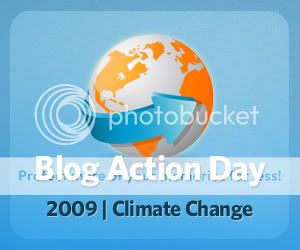
On December 7th, a consortium of world leaders and delegates will converge in Copenhagen for the United Nations Climate Change Conference in the hopes of drafting a global climate agreement that both supplants the Kyoto Protocol (set to expire in 2012) and more accurately reflects evolving realities of a changing world, such as China overtaking the U.S. as the biggest emitter of CO2. As the clock ticks towards this important opportunity for action, environmental issues are taking center stage in several important events, none more important than today: Blog Action Day 2009. Over 10,000 blogs from 151 countries have pledged to write about the same issue, climate change, to spark discussion and effect social change. As part of our continuing “It’s Not Easy Being Green” coverage of the science and technology behind the environmental revolution, ScriptPhD.com is proud to be a part the largest-ever web-based activist gathering. We bring you the story of a Brazilian delegation that used grassroots mobility to successfully bring to the forefront and strategize mitigating deforestation of the Amazon and the story of a renegade photographer who uses pictures to give a voice to our endangered planet. Click “continue reading” for more.
Deforestation and Carbon Emissions
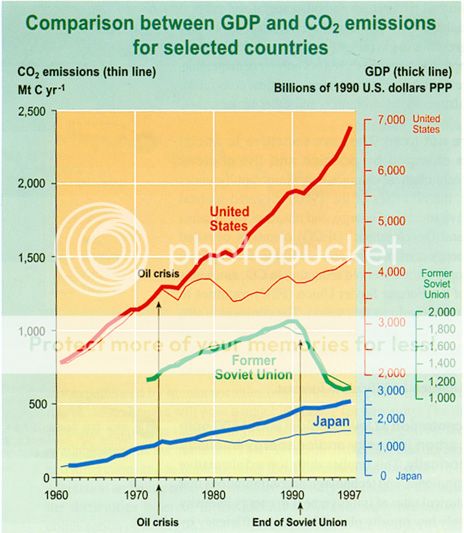
Tropical forests exist in a rapidly changing global climate. Those changes are mainly due to the rising presence of trace gases (greenhouse gases) such as carbon dioxide, methane, nitrous oxide and fluorocarbons. The increase of these gases, and their deleterious impact, can largely be traced to the development of humans and their consequent energy consumption. Several economic indicators can be used to measure the correlation between human behavior on the ground and its effect on climate, including energy use, population (in the developing world) and most importantly GDP. A 2001 report from the Intergovernmental Panel on Climate Change shows a clear link between GDP and CO2 emissions (see figure on the right).
A whopping 20% of CO2 emissions can be linked to deforestation, particularly in South America, Africa, and Southeast Asia, as can be seen below. The primary aim of deforestation is development, which results in a direct increase of CO2 in the atmosphere but also results in an overall loss of forest biomass, which is no longer capable of absorbing CO2. By far the largest rainforest, and the largest swatch of deforestation, rests in Brazil’s Amazon. Covering about 87% of their original extent, the forests of Amazonia host a quarter of the world’s terrestrial species and account for 15% of terrestrial photosynthesis. Deforested land in Brazil has either remained cropland (6%), been converted to pastures (62%) or for regrowing vegetation (32%). Human activity has included logging, hunting, and fire leakage.
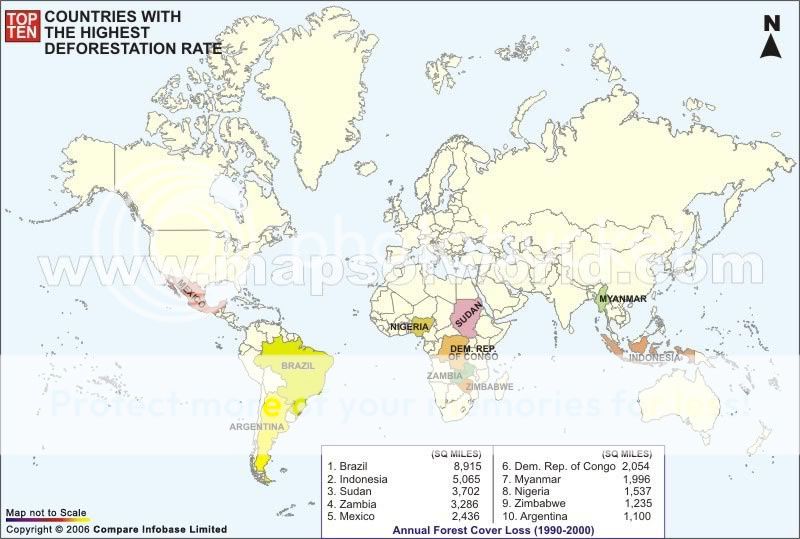
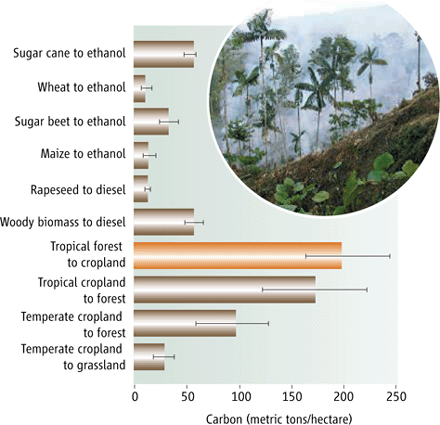
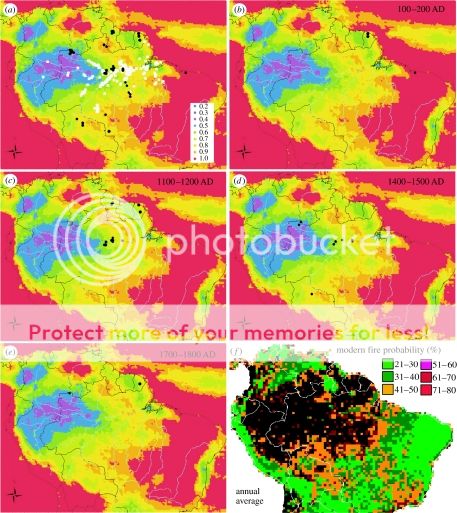
The climate change effects within Brazil’s Amazon forests have been swift and severe: a decrease in rainfall, longer dry seasons, and the potential of prolonged droughts. Temperatures, which had been warming at about 0.25 ?C per decade, are expected to rise about 3.3 ?C this century. Not significant, you say? At the end of the last glacial period, the Amazon warmed only ~0.1 ?C per century. The figure on the right shows current fire probability, the highest rates of which have greatly expanded from areas with traditionally low historical precipitation (blue and purple). The bottom line? If deforestation is not mitigated, and we continue with “business as usual”, the Amazon rain forests will continue to be ravaged. A scientific model (see below picture) shows deforestation in 2050 (in red) under current rates (panel A) and increased governance scenarios (panel B).

Now that we’ve covered the science behind deforestation, and its relationship to carbon emissions and climate change, it begs the question of whether climate is bad for development. The impact of Amazon deforestation affects 5 million inhabitants, 1/4 of vertebrate species and results in 90 billion carbon tons emitted. While we can’t very well arrest global development and modernization, we can address how business models can be constructed to work in concert with local populations and in a green-friendly fashion. To discuss this topic, a distinguished delegation of Brazilian leaders gathered a couple of weeks ago in Los Angeles for a rare joint international appearance as part of California Governor Schwartzenegger’s Governor’s Global Climate Summit. Hosted by the Environmental Defense Fund and UCLA’s Center for Climate Change Solutions, the panel discussed sustaining forests and empowering local inhabitants’ livelihoods, as well as how to partner with local, state, national and international governments to carry out these policies. ScriptPhD.com was grateful and fortunate to attend this special assembly of people at the front
lines of solving this crisis.
“Perspectives From the Amazon: Forests, Climate Change and Community Benefits”
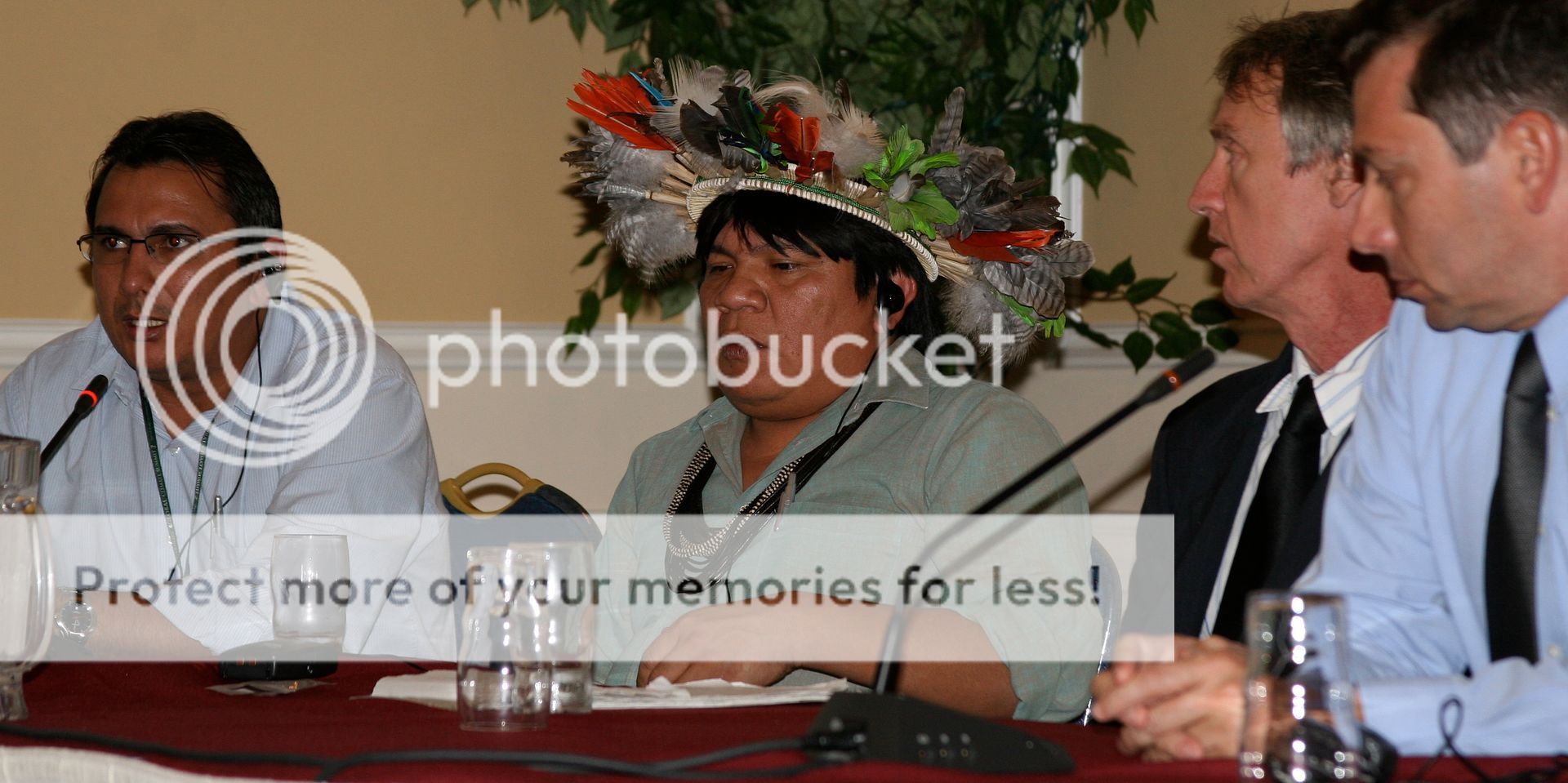
Manuel Cunha
Mr. Cunha is the President of the National Council of Rubber Tappers, an organization formed by Chico Mendes (who was assassinated in 1988) devoted to protecting Amazon forests managed by their traditional inhabitants. He is responsible for 88 Reserves that cover over 20 million hectacres of the Amazon. He is a passionate advocate of agrarian reform, a manager of the pilot program extractive reserves project (RESEX), and a coordinator for project strengthening and development with other leading Brazilian organizations. Oh and by the way? He has no formal education. A child of rubber tappers, he never learned to read, and never had a necessity to do so. He never could have imagined his commitment to the cause of the Amazon people leading him, along with his fellow panelists, to a climate change conference in Copenhagen. In the mid-1980s, Mr. Cunha became involved with several grassroots social movements that were comprised of workers, who had the most incentive to strengthen local organizations and improve the quality of life for families. The focus, all along, was on conservation. The populations in these areas had the historic experience of living in the forest and were dependent on policies carried out by the government. These populations are also more vulnerable, as they live on the borders of heavy deforestation, where up to 50% of forests are being lost.
With $17 million in funding from the World Bank, the Extractive Reserves Project ($17 million) has provided support to the first and largest extractive reserves established in Brazil. These four reserves cover 2.1 million hectares – an area half the size of Switzerland. The Project results include progress on: completing the legalization of the reserves, strengthening local community organizations, installing needed infrastructure, and improving subsistence and commercial production. New products and techniques that the project is helping to introduce include: use of medicinal plants, development of eco-tourism, cultivation and use of natural vines, production of handicrafts, and use of fallen timber for small-scale wood processing.
Dr. Osvaldo Stella
Dr. Stella is an ecologist and project coordinator of climate change at the Institute for Environmental Research of Amazonia (IPAM). He is coordinating a United Nations-funded project entitled “Reducing Emissions from Deforestation and Degradation (REDD). The core principles of the REDD program involve identifying the drivers and vectors of deforestation (loggers, cattle ranchers and small land owners) and conservation (rubber tappers, local inhabitants) and fostering agricultural productivity through self-sustaining technology. The criteria for funding include fair distribution of money to the local families, additional efforts in other developing countries and transparency and respect for people’s rights. An Amazon pilot project was centered near the Trans-Amazonic roads, some of the oldest in Brazil, which are a contributing cause of deforestation by proximity and mobility. 350 small producer families, overseeing an average of 90.7 hectacres each, were chosen for the project, the aim of which was to produce financial incentives for sustainability.
With the participation of the Amazon families, 3.2 million tons of CO2 have been stopped in Brazil, at a cost of only $12.7 million USD. That translates to $4.05 per ton of carbon saved. The cost of carbon reduction per ton in the State of California? $30-50 in a thermal plant. The Brazilian model, simple, effective, inclusive, could teach the United States and other countries a lot about climate reduction and making lives better.
To read more about REDD, click here.
Chief Almir Narayamoga Surui

Perhaps the most special moment of the seminar was the participation and message of Chief Almir (yes, a bona fide Amazon chief!). Chief Almir is the General Coordinator of the Metareila Association of the Surui Indigenous People, inhabitants of the Rondonia state in Brazilian Amazon. With a total population of 1,200 people spread across 24 villages comprising about 248,000 hectacres of forests, they are one of the most isolated people on Earth. The Suruí only recently established contact with mainstream society, in 1969. Since then, they have struggled with the combined pressures of cultural degradation and environmental devastation. The Surui people were almost wiped out by disease, but had historically relied only on the bow and arrow as a weapon of justice and self-defense. After their population dwindled to 300 from it’s height of 5,000 people, the Surui realized their best, and first legal, weapon was communication. To help preserve their territory, they learned Portugese and undertook an ambitious 100% indigenous effort to reverse the deforestation of the loggers and modern invaders and to gain recognition by the Brazilian government. Today, the Surui are one of the first indigenous people of South America to use high-tech tools (Google Earth, handheld GPS devices) to police their territory. In cooperation with Google Earth Outreach, they can request more detailed satellite photos when they spot suspicious areas. If loggers or miners are detected, they refer the case to the authorities who have them removed.

Under the guidance of Chief Almir, in 1997, the Surui people formed a cohesive task force to establish a diagnostic process for evaluating and mitigating the deforestation–7% at that point–which led to a 50 year plan for revitalization and reforestation efforts that included the following milestones:
•2000: Diagnosis of the problem
•2004: Commencement of reforestation efforts
•2005: Beginning of cultural mapping (including partnership with Google Earth)
•2006: Articulated a partnership of a 50-year beta project to study and understand the carbon process of the forest.
•2008: Commencement of studying forest trends
•2009: Undertaking legal communication with the Brazilian government to facilitate ethnographic studies, reforesting activities, coordinating visits on deforestation and Surui anthropology, forming partnerships for future reforestation plans and instituting a carbon project to sell carbon for the benefit of the Surui people.
So far, the project seems to be a raving success, as evidenced by a 2008 visit from the Prince’s Rainforest Project to the new indigenous cultural center that Chief Almir helped to erect. The Chief has been named director of the Ethno-Environmental Department of the Coordination of Indigenous Organizations of the Brazilian Amazon, which he proudly represented at the United Nations Climate Change Conference in Bali.
Dr. Stephan Schwartzman
Dr. Schwartzman is an anthropologist leading the Environmental Defense Fund’s effort to reduce emissions from deforestation in developing countries. He has lived among the native Panará tribe and learned their language, helping the emerging rubber tappers’ movement since 1985. He closed the panel by remarking that although 15-20% of all carbon emissions, definitively the most significant component of climate change, are caused by deforestation, the current Kyoto Protocol does nothing to stop it, while the social organizations in the Amazon have done tremendous amounts since the 1970s. Their model has been adopted by Papua New Guinea and has sparked collaboration with California and the United States Government. In fact, two bills currently in the US Congress, the Waxman-Markey bill and the Kerry-Boxer bill create provisions for reduced international deforestation via offset credits.
2009 marks the 100th anniversary of the official establishment
of national parks in the United States by our biggest environmentalist president, Teddy Roosevelt. Together with Brazil’s famous explorer Mariano da Silva Rondon, Roosevelt explored the uncharted, punishing territory of none other than the Brazilian Amazon, chronicled in the novel The River of Doubt, as a vision of conservation and inspiration. The forests that existed during his time in the United States have been virtually eradicated. However, the Amazon basin is still in the early stages of ruin, and is resilient enough to recover, but only if we act today.
A Picture is Worth a Thousand Trees
The inspiring story of the Brazilian activists’ success highlights that change is most often less a function of power and social standing than it is passion, organization and persistence. Chief Surui and his people didn’t have wealth, influence or even formal educations. Rubber Tappers Leader Mr. Cunha, who is admittedly illiterate, hadn’t even seen a PowerPoint presentation before his trip to Los Angeles a couple of weeks ago. But they had ethnographic tools, a voice and an unshakable belief in their cause. And they had pictures. Lots and lots of pictures. Our most powerful and universal currency, after all, is imagery. Nothing speaks more effectively to the devastation and pillaging of the Earth’s environment than photography. It is irrefutable, timestamped and jarring in ways words can never be.
No one does this better than world-renowned documentary photographer Colin Finlay, whom I had the distinct pleasure of meeting recently. Mr. Finlay has circled the globe over 27 times, chronicling climate change and the human condition, including war, famine, genocide and environmental ruin, most recently in a retrospective book appropriately entitled “Testify”. His photojournalism, captured in the most remote corners of our world, is silent activism in breathtaking vividness and has been honored with every major accolade in the field, including six Picture of the Year International awards. Mr. Finlay’s environmental travels have taken him from the Arctic Circle to Antarctica, via Easter Island, Cambodia, West Virginia and Peru. “I’m working to connect dots, how each piece relates to other places. What happens when the temperature rises by six degrees, affecting the South Sudan and the Sahel desert?” Finlay said in an interview with the environmental organization TreeHugger. “I’m putting a human face on what’s happening with our climate. It’s not just landscapes and beautiful natural stuff — the human element is there too. The important thing is to realize that all of us are in this together. So how do we make a difference?”
The “beautiful natural stuff” is undeniable though, such as this stirring image of melting ice sheaths in the Arctic Circle:
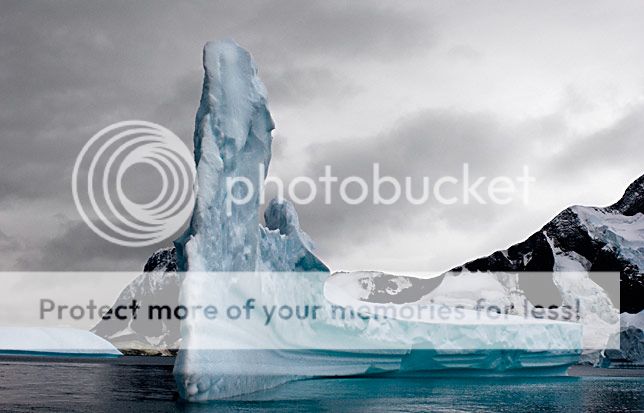
A glacier in Antarctica. Will it still exist in ten years?
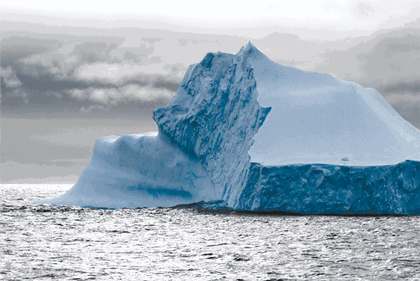
The anguish of two starving Polar Bears (climate change and global human fishing habits have greatly depleted natural sealife):

To the bears in the above image, Mr. Finlay wrote: “You will die. Man will see to that. You have beneath your paws oil, and
this is something we kill men, women and children for. And death, it will not discriminate and it will not be quick. You are to be protected under the endangered species act, but the caveat is that you are the only animal where your environment does not have to be protected. Inuit elders are said to be reincarnating into your very essence. To know what it is that you feel, to learn from within your soul. Inhabit your eyes, to understand your pain, and the hunger that consumes you, joining you in your plight.”
The rural blight of West Virginia mountaintop mining:

Ultimately, says Finlay, “I hope my photographs are the catalyst. Once people are affected, moved, concerned, and experience empathy, it’s so important to give people something to do. How can you make a difference and learn more? You have to show them.“
So now that you’ve been shown, in pictures, in the resilience of a community that wouldn’t give up on their native land, and in the thousands of blog posts pouring in from around the world, what will you do? Take action by looking through this complete list of public and private environmental organizations from around the world, and informing yourself on different ways you can go green in your everyday life. Ultimately, it comes down to the old adage “Think globally, act locally”. Making small, easy-to-incorporate changes will compound to make one big difference. Take the bus to work tomorrow, or, if you live close to work, walk or ride the bike. Buy eco-friendly detergents, soaps and cleaning solutions. Take your own cloth bags to the market. Support companies committed to green productivity and manufacturing. RECYCLE. Think you can’t make a difference unless you’re writing emissions legislation? A group of native South Americans that had not encountered modern civilization before the late 1960s took on the Brazilian government–and won. Anything is possible. So take action today. Our planet depends on it.
~*ScriptPhD*~
*****************
Follow ScriptPhD.com on Twitter and our Facebook fan page. Subscribe to email alerts for new posts on our home page.